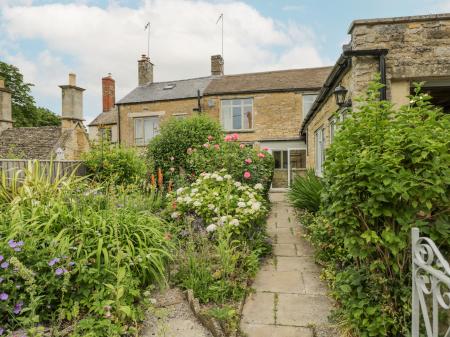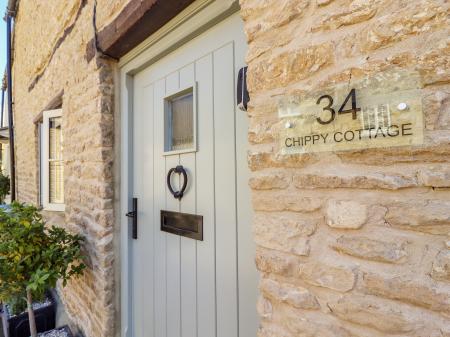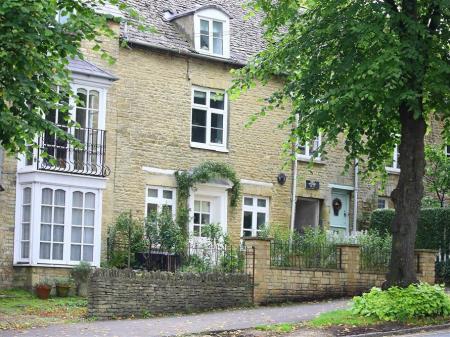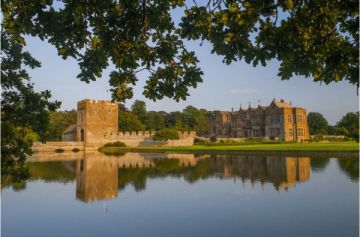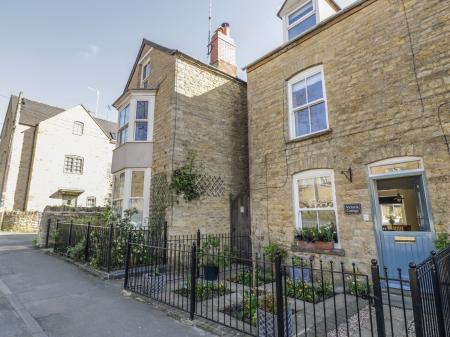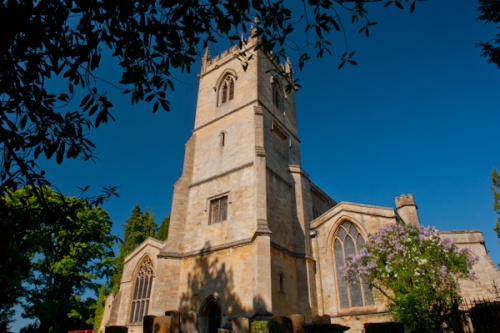
The church may have 12th-century foundations, but few fragments of that ancient building remain. There is much 13th and 14th-century work in the chancel and aisles. The oldest complete feature is the 12th-century chancel arch.
DEATH ON THE TOWER
When the new English Prayer Book was introduced under Edward VI, there was widespread unrest in Oxfordshire. One of the leaders of the resistance to Edward's new prayer book was Henry Joyce, the vicar of Chipping Norton.
In 1549 Joyce was arrested for his part in the 'Oxfordshire Rising' and hung in chains from the tower of his church until he died. It's a sobering thought when you look up at the beautiful tower today, to realise that it was used in such a bloodthirsty way.

INTERIOR HIGHLIGHTS
You reach the first historic highlight of St Mary's before you get inside the door. As you walk through the two-storey south porch, pause and look up. Above your head is a beautiful vaulted roof, with a series of wonderfully carved bosses.
The bosses include several variations on a Green Man and an amusing depiction of a sheep overpowering a wolf. The porch itself is unusual; it is built to a hexagonal plan, one of only 3 known hexagonal porches in England.
Now into the church interior, and prepare to be amazed. I think my jaw must have dropped to an alarming degree when I first beheld the nave and clerestory of St Mary's. The nave is extremely high, and that height is emphasized by the most extraordinary clusters of fluted pillars.
The pillars and the nave arcade arches are so ridiculously thin that you feel you must be looking at an optical illusion! How on earth do they support the roof?
But they do, and for that we must thank the architect, John Smyth of Cambridge, who was also responsible for the chapel at Eton College. The nave dates to 1448, and is similar in construction to the nave of Canterbury Cathedral, with an arcade of compound pillars made of 5 clustered shafts. The Chipping Norton nave has been called the finest in the county outside Oxford.

The lowest window in the chancel has stained glass by CE Kempe. Also in the chancel is a three-seat sedilia, dating to the 15th century. In the north aisle, almost hidden in a dark corner by the organ, is the Croft table tomb, dating to around 1500, with worn alabaster effigies in period dress. The north aisle has numerous medieval brasses on the wall.
At the west end of the nave is a wonderful Tudor chest tomb to Thomas and Elizabeth Rickardes. Elizabeth was a Fiennes from Broughton Castle. Note how her feet rest on a small dog, tangled in the folds of her gown. The effect is to make the difference in height between Elizabeth and her husband a little less obvious!
One 19th century feature worth noting is the ?Creation? window in the south aisle. This is fitted with lovely stained glass by the London firm of Clayton and Bell, whose work adorns many of the finest Victorian churches.
Just up Church Street from St Mary's is a row of attractive 17th-century almshouses built of Cotswold stone.
HISTORICAL HIGHLIGHTS
- 15th-century nave arcading
- Hexagonal porch with carved bosses
- Victorian stained glass by Kempe and Clayton and Bell
- Tudor Rickardes tomb












 We've 'tagged' this attraction information to help you find related historic attractions and learn more about major time periods mentioned.
We've 'tagged' this attraction information to help you find related historic attractions and learn more about major time periods mentioned.